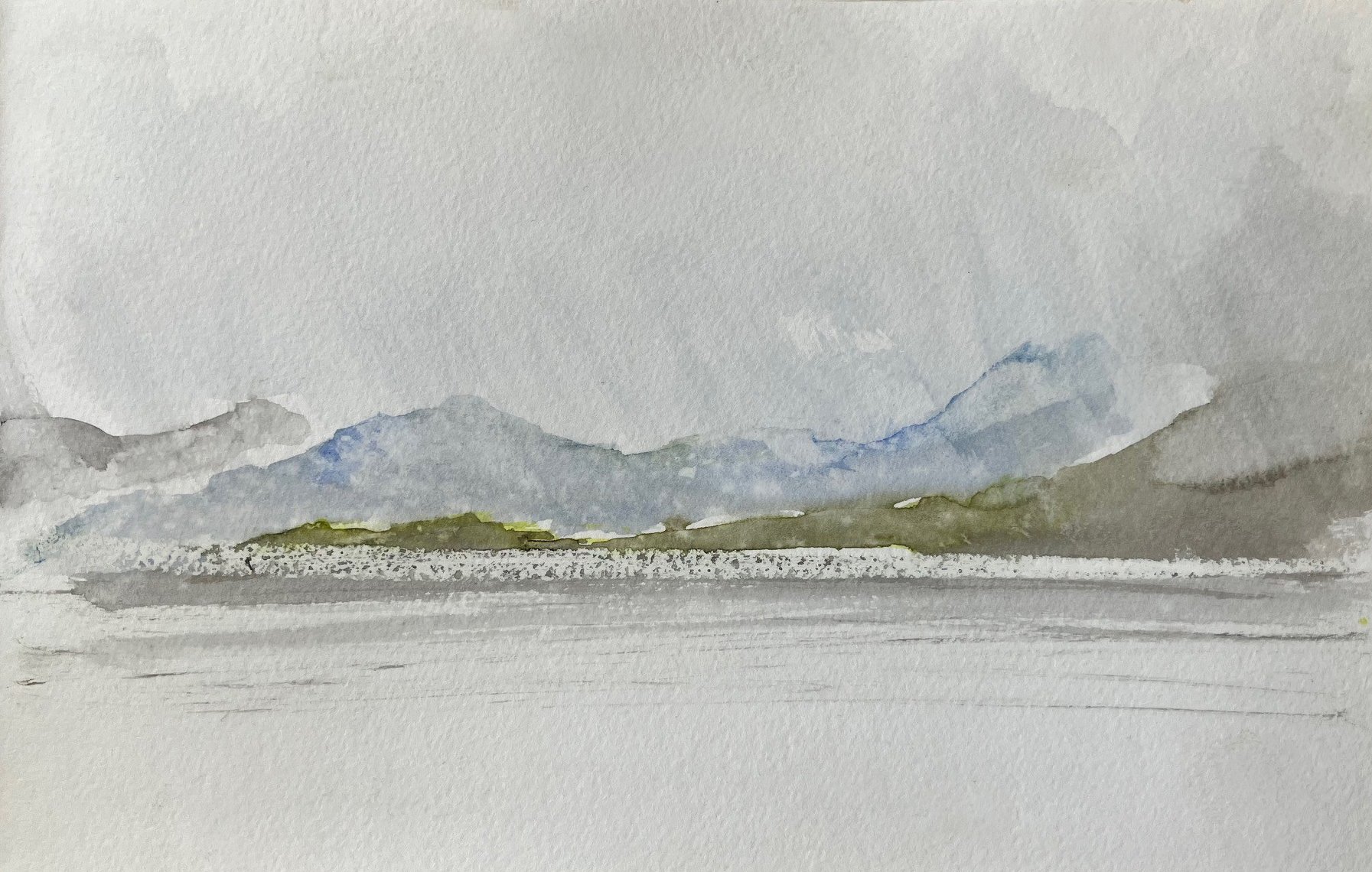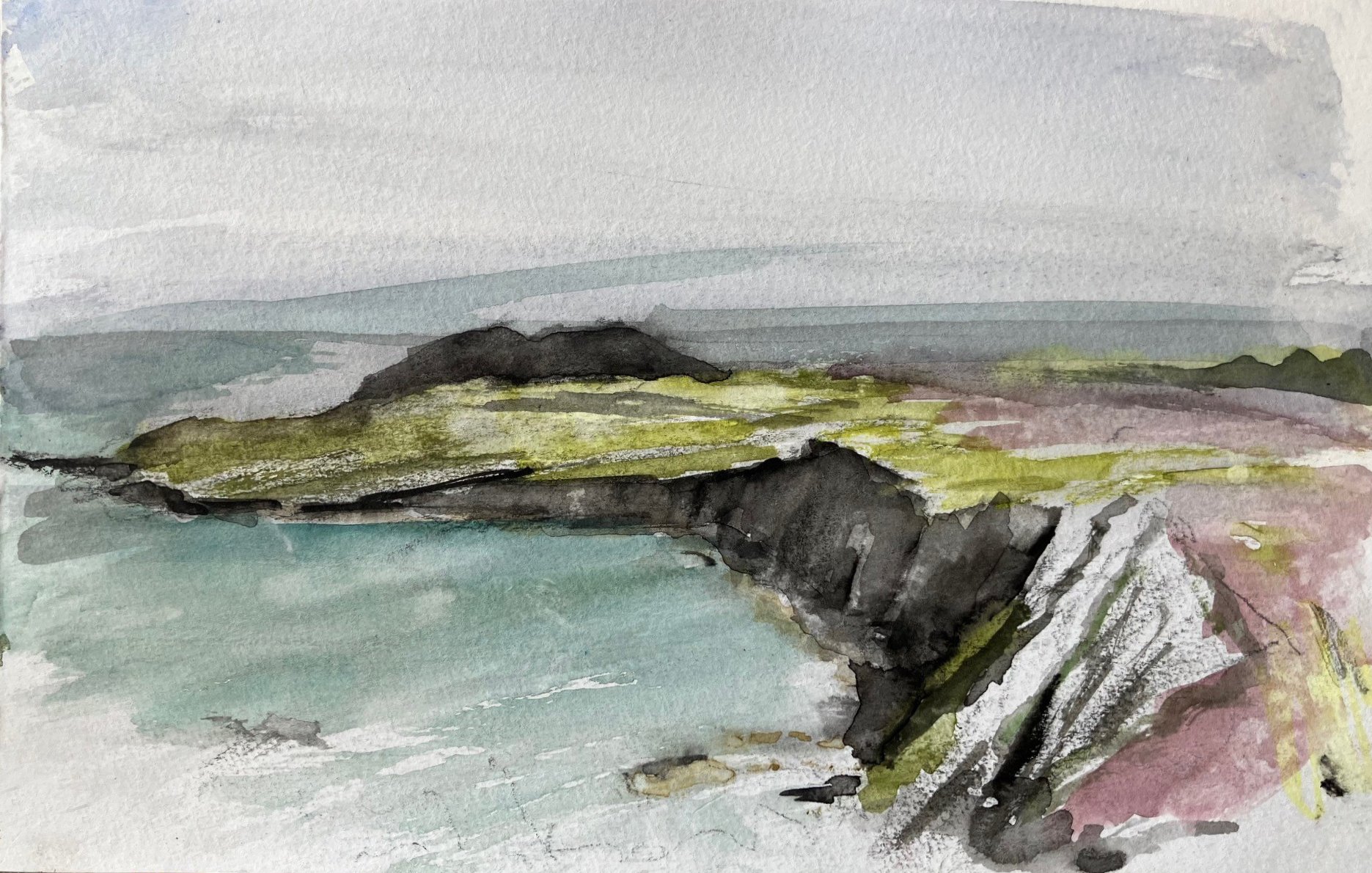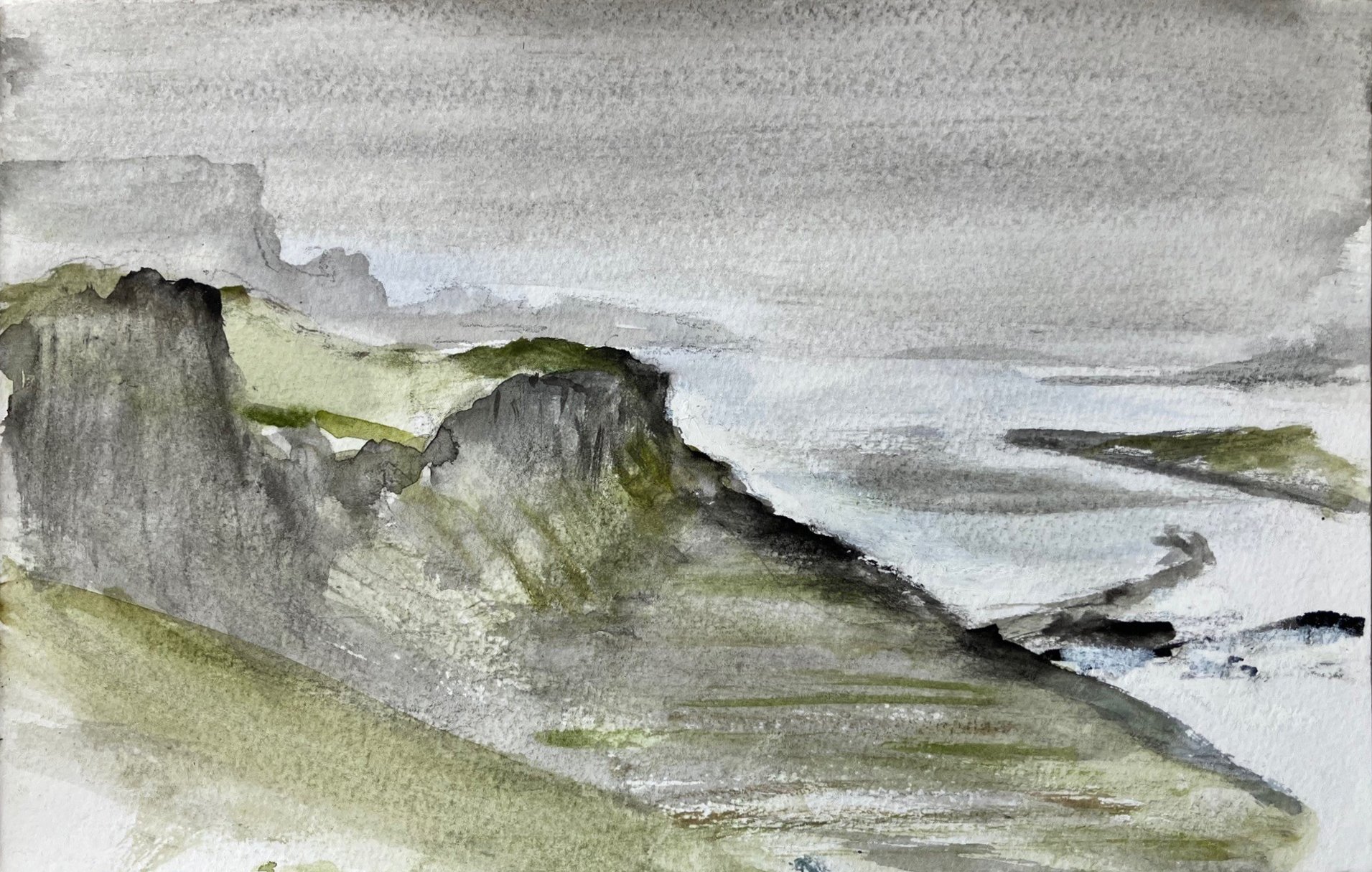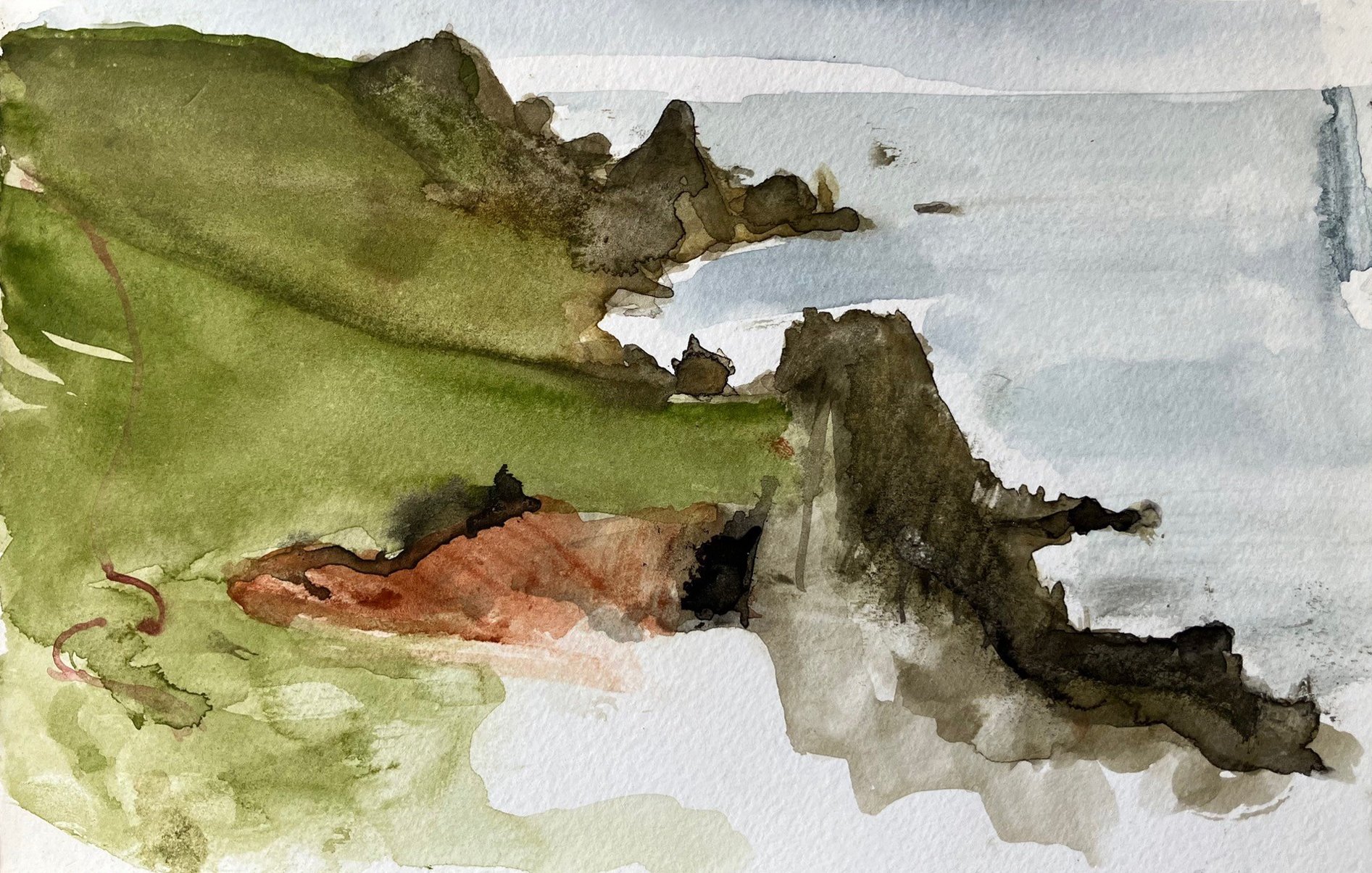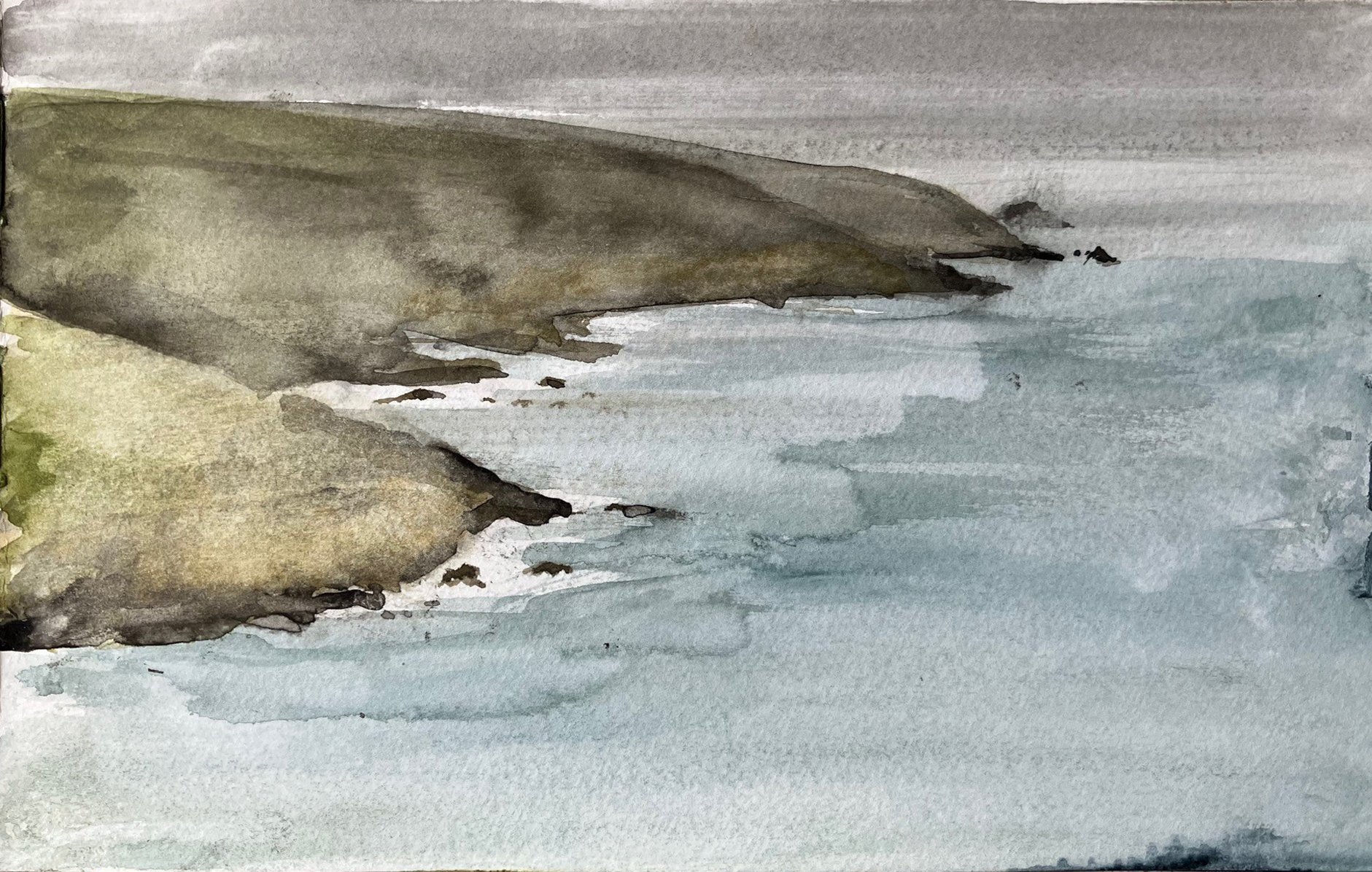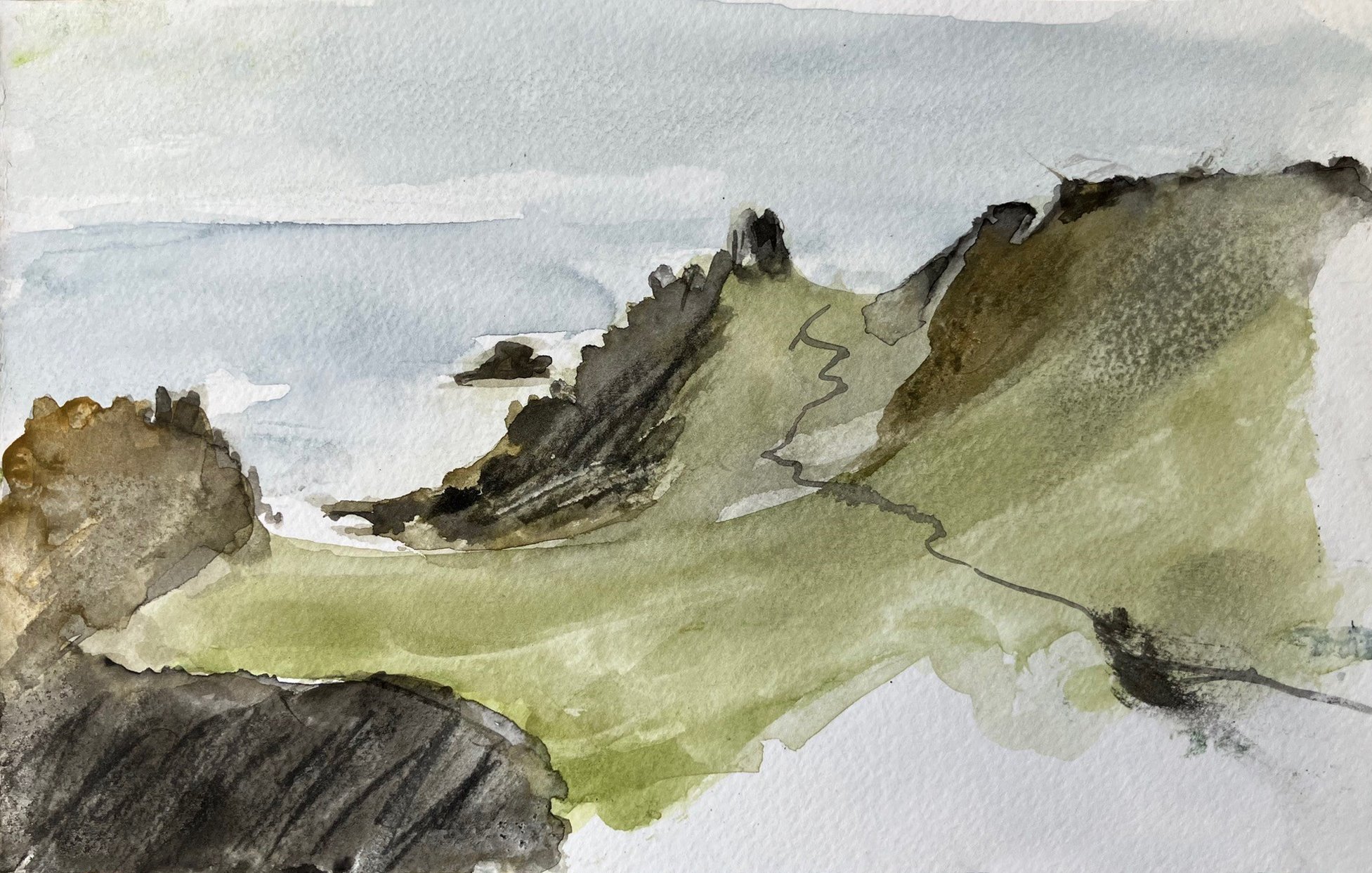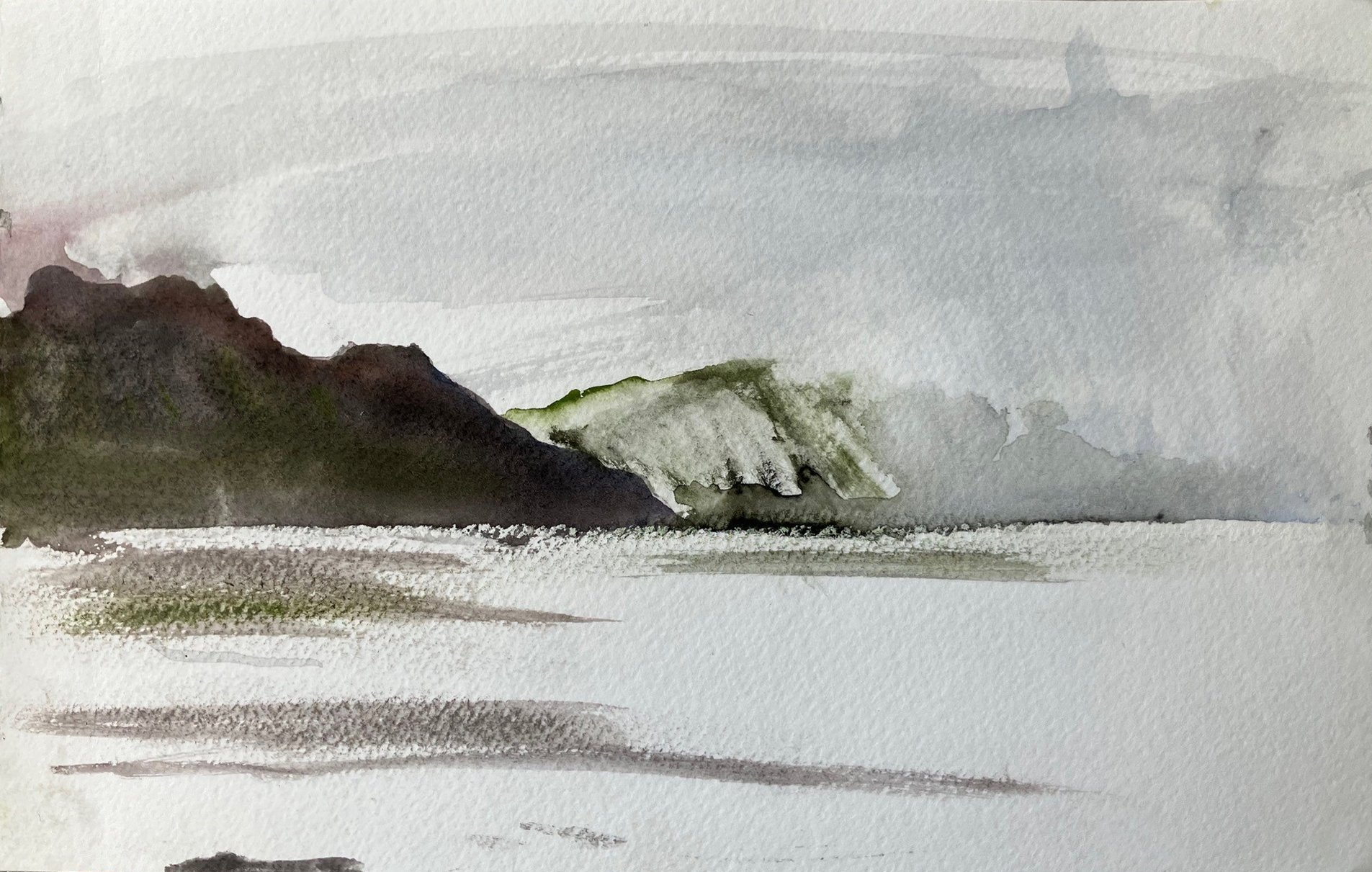Water - Pigment - Stone
Summer 2023
Alongside my usual practice I have always made drawings when travelling. This summer I made two trips both to the far west of the UK but each location 500 miles apart, West Penwith in Cornwall and the Northeast corner of Skye. I took along a pair of small watercolour books measuring 210mm x 130mm - I use two books so that I can work in one while the other dries.
I don’t regard myself as a skilled draughtsman, but I do know when something isn’t working, so I set out to just make images work - at the cost of appearing slick or skilful. The battle to record the information is what these drawings are about.
I like working in watercolour. The effect of sea or mist can be created using generous washes, the effect of rock created by randomly blotting out pigment. These landscapes have been created by the action of water on mineral, and there is something wonderfully appropriate to using pigment-minerals mixed with water to depict them.
I love drawing cliffs and the coastal landscape. This is the place where the soil recedes to reveal the underlying rock formations, sculpted by thousands of years of erosion by the sea. When rock is concealed below ground it has little form, you see this in photographs of quarry faces - stone exists as huge formless volumes in the ground - only when it is exposed for millennia does it get sculpted by the effects of water and ice.
Working with stone is a key part of my practice. I’m interested in borrowing from the eroded rock forms that I see when drawing. Shaping stone into curvaceous forms can bring a sense of softness, in contradiction with its actual hardness.
We live in highly geometric environments often dominated by the straight line and the right-angle. Working with stone, shaped in smooth curvaceous forms, allows me to work in counterpoint to this geometry and, to make places and spaces feel a little more natural. Perhaps more human.


